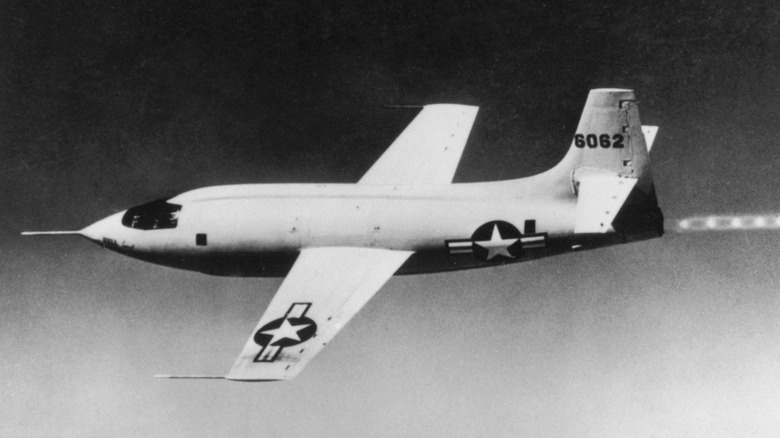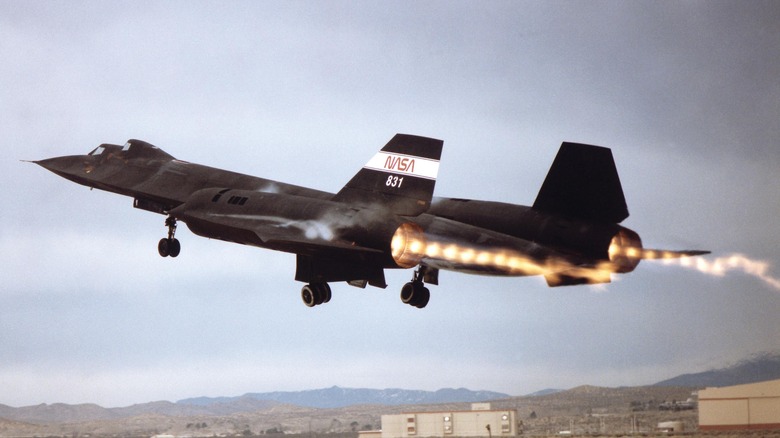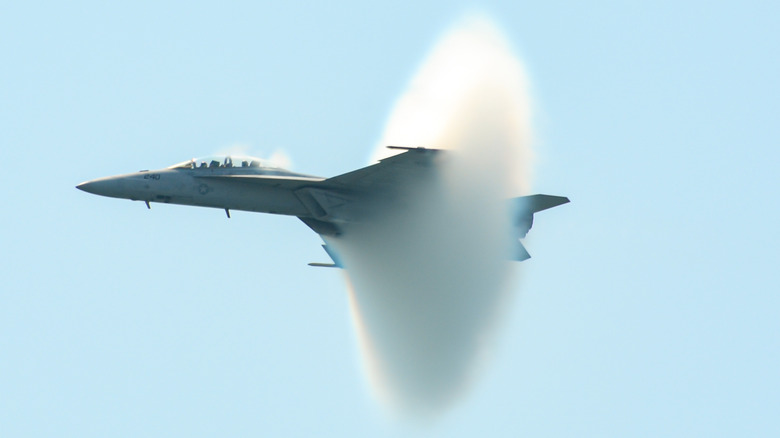How Fast Is Supersonic Flight And How Does It Work?
The speed of sound, which is the speed at which a sound wave moves through the air from its source is about 768 miles per hour at sea level. Until after World War II, no aircraft on earth, rocket-powered or otherwise, had broken the sound barrier. Even the first-ever jet fighter, the Messerschmitt Me 262, topped out at 540 miles per hour. On October 14th, 1947 Brigadier General Chuck Yeager climbed into his Bell X-1 rocket plane dubbed the "Glamorous Glennis," and became the first human being alive to break the sound barrier and fly faster than the speed of sound.
Yeager and the X-1 had gone "supersonic" for the first time in human history by flying at 700 miles per hour at 43,000 feet (sound travels at different speeds at higher altitudes). Eventually, the plane would reach 957 miles per hour during its many flight tests before its retirement in 1950 when it was donated to the Smithsonian. That exact plane is now on public display at the Udvar-Hazy Center in Virginia.
What does it take to go supersonic?
According to NASA, supersonic speeds are given a Mach number. Mach 1 is the speed of sound. Mach 2 is twice the speed of sound, and so on. Fighter jets like the McDonnell-Douglas F-15 Eagle are capable of flying at 1,875 miles per hour or about Mach 2.5. The SR-71 Blackbird, a Cold War-era reconnaissance plane could reach speeds of over Mach 3.
As for actually achieving those speeds, it takes a little bit of aerodynamic ingenuity, and a lot of power. The first fighter jet, the Third Reich's Me 262 was powered by dual Junker Jumo 004 engines that put out a combined 3,940 pounds of thrust. That allowed it to reach 540 miles per hour. The Bell X-1, on the other hand, had a rocket engine that threw out 6,000 pounds of thrust.
There's also the issue of air resistance. Standing outside on a calm day, the air around you doesn't seem like much of an obstacle, but once you start reaching speeds of well over 700 miles per hour, the air acts more like a brick wall. The Bell X-1 overcame this problem by cutting right through the air. It was designed to take the shape of a bullet, in this case, a Browning Machine Gun .50 Caliber round. Its shape, combined with its then unheard-of amount of thrust allowed the plane to literally break through the sound barrier.
As with cars, most speed-related problems can be solved by throwing more power at them. That's why ultra-modern jets like the F/A-18 Super Hornet can reach speeds of up to Mach 1.6. It's not only shaped to cut through the air, but 34,000 pounds of thrust helps quite a bit.
What is a sonic boom?
When an aircraft breaches supersonic speeds, it will often emit a loud cracking noise (also known as a "sonic boom") as the sheer force of the aircraft moving through the air violently displaces air molecules. This forms the shockwave that is often portrayed in movies when something is going wickedly fast. That loud crack is also the reason why the sound of a gunshot is so loud as most ammunition travels at supersonic speeds.
Although passenger planes like the Concorde, and its Soviet cousin, the Tupolev Tu-144 regularly went supersonic when transporting passengers (the Concorde could cruise at Mach 1.8). Now in 2023, your average passenger plane like a Boeing 737-800 only cruises at 525 miles per hour, not too far off from the top speed of World War II-era jet fighters. In recent years, military aircraft, mostly fighter jets, are the only planes that regularly break the sound barrier.


